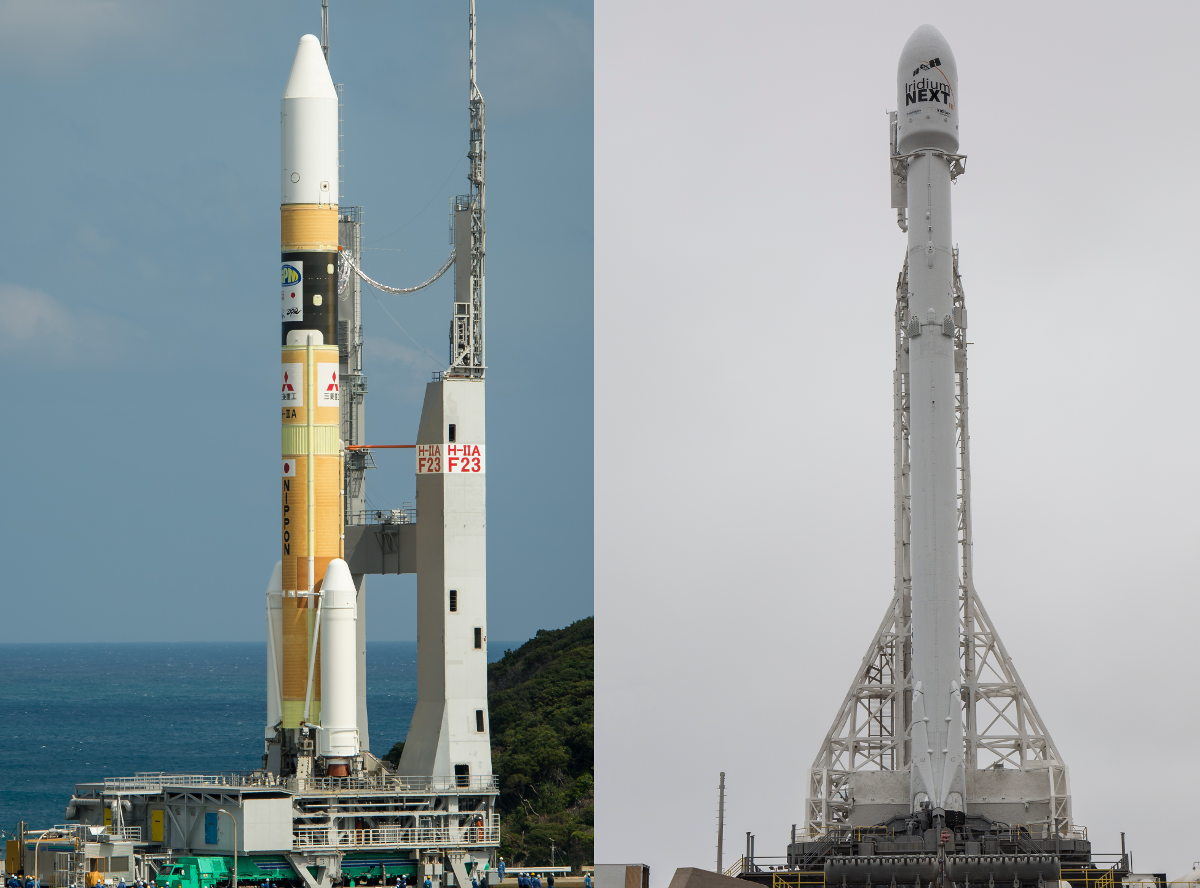H-IIA and Falcon 9 – two rockets will launch 61 seconds apart
December 23rd can be an interesting day for rocket launch enthusiasts. The launch of the Japanese H-IIA and SpaceX's Falcon 9 rockets is scheduled for this day. It wouldn't have been anything unusual if it wasn't for the fact that both launches can be separated by just 61 seconds.
The first one, at 01:26:22 UTC will be H-II rocket launching from Tanegashima Space Center. It will carry two satellites into space - the Global Change Observation Mission (GCOM-C1) and the Super Low Altitude Test Satellite (SLATS). The first one, GCOM-C1, will study climate change on our planet. The satellite will be able to create a complete picture of the Earth every 2-3 days. The Second-generation Global Imager (SGLI) will provide the possibility to collect data on, among other things, the circulation of water in nature and to investigate clouds and aerosols contained in the atmosphere. The satellite has a mass of approximately 2000 kg. The second satellite, SLATS, is to explore the possibility of operating in a very low Earth orbit (LEO), at an altitude of less than 200 km above the Earth's surface. It will be released together with the GCOM-C1 at an altitude of more than 600 km, after which it will be lowered to its final orbit (<180 km) after a series of orbital maneuvers. In order to counteract quite significant atmospheric resistance at this altitude, the satellite will be equipped with an ion engine.
This launch will be streamed live on JAXA channel on YouTube.
Falcon 9 launch is scheduled for 01:27:23 UTC. The rocket with Iridium-4 mission will be launched from Space Launch Complex 4E at Vandenberg Air Force Base, California. The rocket will carry 10 Iridium NEXT satellites, which will provide voice communication and data transmission services. This time SpaceX will use flight-proven first stage of the Falcon 9 rocket, which was previously launched during Iridium-2 mission in June 2017. It then landed on the Just Read The Instructions autonomous spaceport drone ship in the Pacific Ocean. During the upcoming mission, no attempt will be made to recover the first stage of the rocket. However, the rocket will be equipped with grid fins, which will help to direct it to a specific place in the ocean.
This launch will be streamed live on SpaceX website.
For launches to take place within 61 seconds, it is necessary that the H-IIA rocket launch at the very beginning of the 20-minute launch window. There is also a chance that one or both of them will be delayed.
You can calculate launch time in your time zone using The Time Zone Converter.
Source: JAXA (1) (2), SpaceX, Iridium
If you've found this post interesting, please consider following our profile @technocracy.

Hi, I found some acronyms/abbreviations in this post. This is how they expand:
thats pretty sweet
It is!
I love this sort of stuff!
So you definitely should follow our profile ;)